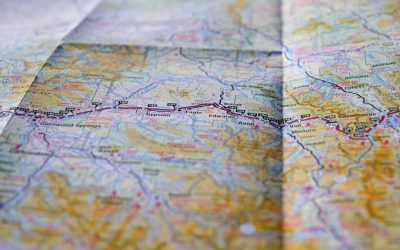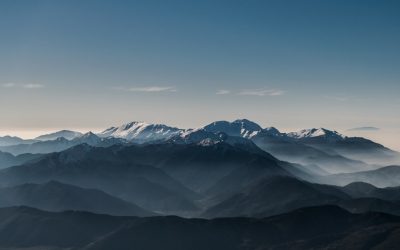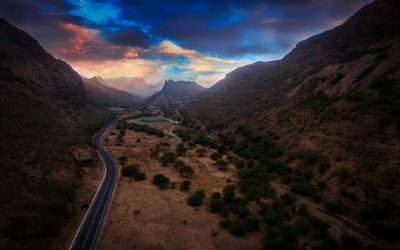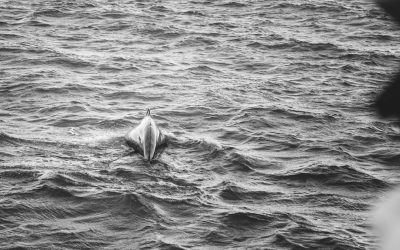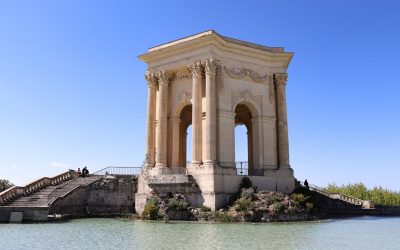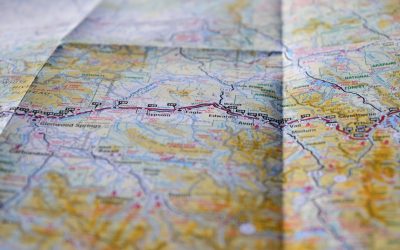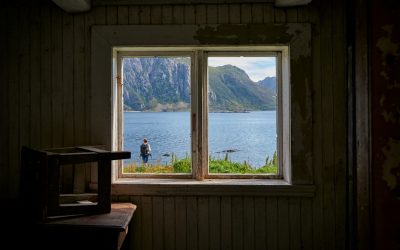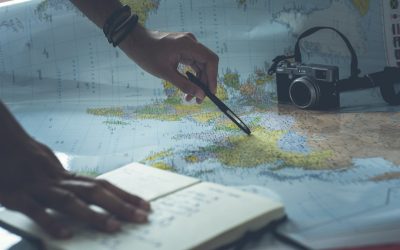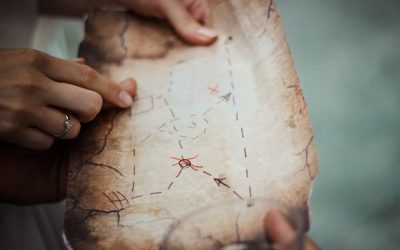World Geography
Geography is the study of the Earth’s landscapes, environments, and the relationships between people and their surroundings. It encompasses both the physical aspects of the Earth, such as its landforms, bodies of water, and climate, as well as the human aspects, including population distribution, cultures, and economies. World geography is a broad field that seeks to understand the complexities of our planet and how humans interact with it. By studying world geography, we can gain a deeper appreciation for the diversity of our planet and the interconnectedness of its various regions.
Geography is a multidisciplinary field that draws on elements of physical science, social science, and humanities. It involves the use of maps, spatial analysis, and geographic information systems (GIS) to understand the Earth’s surface and the processes that shape it. World geography also encompasses the study of human geography, which examines the ways in which people and their activities are distributed across the Earth. By understanding world geography, we can better appreciate the environmental, cultural, and economic challenges facing different regions of the world. This knowledge is crucial for addressing global issues such as climate change, resource management, and international development.
The Five Oceans and Seven Continents
The Earth’s surface is divided into five major oceans: the Pacific, Atlantic, Indian, Southern (or Antarctic), and Arctic Oceans. These vast bodies of water play a crucial role in regulating the Earth’s climate and supporting diverse marine ecosystems. The oceans also serve as important transportation routes and a source of food and other natural resources for human societies around the world.
In addition to the oceans, the Earth’s landmasses are divided into seven continents: Africa, Antarctica, Asia, Europe, North America, Australia (or Oceania), and South America. Each continent has its own unique physical and cultural characteristics, shaped by millions of years of geological processes and human history. From the deserts of Africa to the rainforests of South America, the continents offer a rich tapestry of landscapes and environments for exploration and study.
Major Mountain Ranges and Deserts
The Earth’s surface is also marked by major mountain ranges and deserts that have shaped the planet’s physical and cultural landscapes. The Himalayas, for example, are the highest mountain range in the world and are home to diverse ecosystems and cultures in countries such as India, Nepal, and Bhutan. The Andes in South America, the Rockies in North America, and the Alps in Europe are other prominent mountain ranges that have influenced human settlement patterns and economic activities.
Deserts cover about one-third of the Earth’s land surface and are characterized by low precipitation and extreme temperatures. The Sahara Desert in Africa is the largest hot desert in the world, while the Gobi Desert in Asia is one of the largest cold deserts. Deserts are not only home to unique flora and fauna but have also been important trade routes and cultural crossroads throughout history.
Climate Zones and Biomes
The Earth’s climate is influenced by a variety of factors, including latitude, altitude, ocean currents, and prevailing winds. As a result, the planet is divided into different climate zones, each with its own characteristic weather patterns and ecosystems. The equator, for example, experiences a tropical climate with high temperatures and heavy rainfall, while the polar regions have a cold and dry climate.
These climate zones give rise to different biomes, or large ecological areas characterized by distinct plant and animal communities. The tropical rainforest biome, found near the equator, is home to a diverse array of species and is vital for regulating the Earth’s climate. The grasslands biome, found in regions such as the African savannah and North American prairies, supports grazing animals and has been important for human agriculture throughout history.
Human Geography and Population Distribution
Human geography examines the ways in which people and their activities are distributed across the Earth’s surface. It encompasses topics such as population growth, migration patterns, urbanization, and cultural diversity. Understanding human geography is crucial for addressing global challenges such as poverty, inequality, and environmental degradation.
Population distribution is uneven across the world, with some regions experiencing rapid population growth while others are declining. The majority of the world’s population lives in Asia, particularly in countries such as China and India. Urban areas are also growing rapidly, with more than half of the world’s population now living in cities. This trend has significant implications for infrastructure development, resource management, and social inequality.
Historical and Cultural Geography
Historical geography examines how human activities have shaped the Earth’s landscapes over time. It explores topics such as colonialism, trade routes, and the rise and fall of empires. Cultural geography focuses on how human cultures have developed in different regions of the world and how they interact with their environments.
The Silk Road, for example, was an ancient trade route that connected China with Europe and facilitated the exchange of goods, ideas, and technologies across Eurasia. This historical trade route had a profound impact on the development of cultures and economies along its path. Similarly, cultural geographers study how different societies have adapted to their environments through practices such as agriculture, architecture, and religious beliefs.
The Importance of Geographic Knowledge
Geographic knowledge is crucial for addressing global challenges such as climate change, resource management, and international development. By understanding world geography, we can better appreciate the environmental, cultural, and economic challenges facing different regions of the world. This knowledge is crucial for addressing global issues such as climate change, resource management, and international development.
Geographic knowledge also helps us to understand our interconnectedness with other regions of the world. By studying world geography, we can gain a deeper appreciation for the diversity of our planet and the interconnectedness of its various regions. This understanding can foster a sense of global citizenship and empathy for people from different cultures and backgrounds.
In conclusion, world geography is a complex and multifaceted field that encompasses both physical and human aspects of the Earth’s landscapes. By studying world geography, we can gain a deeper appreciation for the diversity of our planet and the interconnectedness of its various regions. This knowledge is crucial for addressing global challenges such as climate change, resource management, and international development. It also helps us to understand our interconnectedness with other regions of the world and fosters a sense of global citizenship.
FAQs
What is world geography?
World geography is the study of the Earth’s landscapes, environments, and the relationships between people and their environments. It encompasses the physical features of the Earth, as well as the human activity that takes place on it.
Why is world geography important?
World geography is important because it helps us understand the world around us. It provides insights into the physical and human processes that shape our planet, and helps us make informed decisions about how to interact with our environment.
What are the main branches of world geography?
The main branches of world geography include physical geography, which focuses on the Earth’s natural features and processes, and human geography, which examines the relationships between people and their environments.
How does world geography impact our daily lives?
World geography impacts our daily lives in numerous ways, from influencing the weather and climate we experience, to shaping the availability of natural resources and influencing the distribution of populations and cultures around the world.
What are some key concepts in world geography?
Key concepts in world geography include location, place, human-environment interaction, movement, and region. These concepts help geographers understand and interpret the world around them.
Cape Verde’s Population Density: A Closer Look
Cape Verde is an archipelago located off the northwest coast of Africa in the Atlantic Ocean. It consists of ten islands and several islets, with a total land area of approximately 4,033 square kilometers. The country is known for its beautiful beaches, vibrant culture, and diverse landscapes. Population density refers to the number of people living in a given area, usually measured in terms of persons per square kilometer. It is an important indicator of the level of development and resource distribution within a country. Understanding population density can help policymakers and planners make informed decisions regarding infrastructure development, resource allocation, and social services provision. Summary Cape Verde has a relatively small population density compared to other African countries. The population of Cape Verde has grown steadily over the past century, with a significant increase in the last few decades. The majority of Cape Verde’s population is concentrated on a few of its islands, with significant differences in population density between them. Urbanization is a growing trend in Cape Verde, with more people moving to cities and towns. Cape Verde’s population is relatively young, with a high proportion of people under the age of 30. Historical Overview of Cape Verde’s Population Cape Verde has a complex colonial history that has had a significant impact on its population. The islands were uninhabited until the 15th century when Portuguese explorers arrived and established settlements. The Portuguese brought African slaves to work on plantations, leading to a mixed-race population that is still prevalent today. During the 20th century, Cape Verde experienced significant population growth due to high birth rates and limited emigration...
Exploring the Fascinating History of Cape Verde
Cape Verde, officially known as the Republic of Cabo Verde, is an archipelago located off the coast of West Africa in the Atlantic Ocean. It consists of ten islands and five islets, with a total population of approximately 550,000 people. The islands are known for their stunning landscapes, ranging from volcanic peaks to sandy beaches, and are a popular tourist destination. The history and culture of Cape Verde have played a significant role in shaping its identity as a nation. The islands were uninhabited until the arrival of the Portuguese in the 15th century, who established a colony and brought African slaves to work on plantations. This mix of Portuguese and African influences has created a unique cultural blend that is evident in the music, dance, cuisine, and language of Cape Verde. Summary Cape Verde is an archipelago with a rich history and culture. The Portuguese colonization had a significant impact on Cape Verdean society and economy. Cape Verde played a role in the transatlantic slave trade as a global trade route. The Cape Verdean War of Independence was a struggle for independence. Cape Verde faces challenges of globalization and climate change in the future. The Pre-Colonial Era: Discovering the Indigenous People of Cape Verde Before the arrival of the Portuguese, Cape Verde was inhabited by various indigenous groups. These groups included the Bantu-speaking people, who were skilled farmers and fishermen, as well as the nomadic Fulani people, who raised livestock. The indigenous people had their own distinct cultures and traditions, which were passed down through generations. The way of life for these indigenous groups revolved around agriculture and...
Exploring Cape Verde’s Varied Terrain: Mountains, Valleys, and Plains
Cape Verde, an archipelago located off the coast of West Africa, is known for its diverse and stunning terrain. The country is made up of ten islands and several islets, each with its own unique geography and topography. From majestic mountains to lush valleys, vast plains to picturesque coastlines, Cape Verde offers a wide range of landscapes that attract tourists from around the world. The varied terrain of Cape Verde not only provides breathtaking views and outdoor recreational opportunities but also plays a crucial role in the livelihoods of the local population. The diverse geography of Cape Verde is a major draw for tourists. The islands are known for their stunning natural beauty, with landscapes that range from rugged mountains to fertile valleys and pristine beaches. Visitors can explore the volcanic peaks, hike through lush forests, or relax on the sandy shores. The varied terrain also offers a wide range of activities such as hiking, birdwatching, snorkeling, and surfing. Additionally, the unique flora and fauna found in Cape Verde’s different ecosystems make it a haven for nature lovers and wildlife enthusiasts. Summary Cape Verde’s terrain is diverse and varied, offering a range of landscapes to explore. The mountains of Cape Verde are majestic and offer great hiking opportunities. The valleys of Cape Verde are also worth exploring, with unique flora and fauna. The plains of Cape Verde are vast and beautiful, with a unique geology. Cape Verde’s varied terrain is important for agriculture and livelihoods, as well as for sustainable tourism. The Majestic Mountains of Cape Verde Cape Verde is home to several mountain ranges that offer breathtaking views...
Cape Verde’s Climate Zones: Diverse Regions to Explore
Cape Verde, an archipelago located off the coast of West Africa, is known for its diverse climate zones. The country consists of ten islands, each with its own unique geography and climate. Understanding the different climate zones is essential for travelers who want to make the most of their visit to Cape Verde. The climate in Cape Verde is influenced by its location in the Atlantic Ocean and the trade winds that blow from the northeast. The islands are divided into several climate zones, including arid, semi-arid, subtropical, temperate, tropical, coastal, continental, and mountain. Each zone has its own distinct characteristics and offers a variety of activities and attractions for visitors. Summary Cape Verde has diverse climate zones that offer unique experiences for adventure seekers. The arid climate zone features a desert landscape with stunning rock formations. The semi-arid climate zone has savanna grasslands and is home to many bird species. The subtropical climate zone has mild temperatures and is perfect for beach activities. The temperate climate zone has green mountains and is ideal for hiking and nature walks. The Arid Climate Zone: Discovering the Desert Landscape The arid climate zone in Cape Verde is characterized by hot and dry weather throughout the year. This zone is found on the islands of Boa Vista and Sal, which are known for their stunning desert landscapes. The lack of rainfall in this region has resulted in a barren and rocky terrain. Popular destinations in the arid climate zone include the Viana Desert on Boa Vista and the Pedra de Lume Salt Crater on Sal. Travelers can explore the vast sand dunes...
Cape Verde’s Political Boundaries: Provinces, Districts, or Historical Limits?
Cape Verde, officially known as the Republic of Cabo Verde, is an archipelago located off the coast of West Africa. It consists of ten main islands and several smaller ones, with a total land area of approximately 4,033 square kilometers. Understanding Cape Verde’s political boundaries is crucial for effective governance and decision-making within the country. Political boundaries define the territorial limits of a nation and determine its administrative divisions. They play a vital role in establishing the jurisdiction and authority of governments at various levels, from local municipalities to national governance. By understanding these boundaries, policymakers can better allocate resources, plan infrastructure development, and address the needs of different regions within the country. Summary Cape Verde is an archipelago nation located off the coast of West Africa. The country’s political boundaries have evolved over time, with changes to provinces, districts, and municipalities. Regional and national governance are closely intertwined in Cape Verde. Colonialism has had a significant impact on the country’s political boundaries. Understanding Cape Verde’s political boundaries is crucial for effective administration and future development. Historical Background of Cape Verde’s Political Boundaries Cape Verde has a complex colonial history that has greatly influenced its political boundaries. The islands were uninhabited until the 15th century when Portuguese explorers arrived and established settlements. The archipelago became an important stopover point for ships traveling between Europe, Africa, and the Americas, leading to its colonization by the Portuguese. During the colonial period, Cape Verde was administered as a single territory under Portuguese rule. The islands served as a strategic base for trade and as a center for the transatlantic slave trade. However,...
Natural Resources of Cape Verde: Where Natural Resources Are in Cabo Verde
Natural Resources of Cape Verde: Where Natural Resources Are in Cabo Verde Cape Verde, also known as Cabo Verde, is a stunning island nation in the Atlantic Ocean off the west coast of Africa. Although it’s famous for its beautiful beaches and thriving tourism sector, there’s more to explore beneath the surface. This article dives deep into Cape Verde’s natural resources, examining how this archipelago manages to thrive with limited natural wealth. From renewable energy efforts to unique geological formations, this post is a must-read for anyone interested in sustainable development, energy resources, and economic resilience in small island nations. Article Outline Where is Cape Verde and What Makes It Unique? Does Cape Verde Have Abundant Natural Resources? What Are the Mineral Resources in Cape Verde? How Important Is Agriculture in Cabo Verde? What Role Does Renewable Energy Play in Cape Verde’s Economy? How Are Water Resources Managed in Cape Verde? Why Is Tourism So Important for the Cape Verde Islands? What Is the Government of Cape Verde Doing to Boost Resource Efficiency? How Did Cape Verde’s Strategic Location Shape Its Resource Use? What Can Other Nations Learn from Cabo Verde’s Development Model? 1. Where is Cape Verde and What Makes It Unique? Cape Verde is an island nation located in the Atlantic Ocean, around 570 kilometers off the west coast of Africa. It comprises ten main islands and several smaller islets, forming the Cape Verde archipelago. The islands are split into two groups: Barlavento (windward) and Sotavento (leeward). The cape verde islands are volcanic islands, which contributes to their rugged terrain and limited arable land. The island...
Cape Verde’s Cultural and Historical Landmarks: Must-Visit Sites
Cape Verde, an archipelago located off the coast of West Africa, is a country rich in cultural heritage. Its unique history and geographical location have resulted in a diverse and vibrant culture that is influenced by various African, European, and Caribbean traditions. From its UNESCO World Heritage Sites to its colonial architecture, music and dance, and traditional art and craft, Cape Verde offers a wealth of cultural experiences for visitors to explore. In this article, we will delve into the different aspects of Cape Verde’s cultural heritage and highlight the significance of preserving and celebrating it. Summary Cape Verde has a rich cultural heritage that is worth exploring. There are several UNESCO World Heritage Sites in Cape Verde that are worth visiting. The colonial architecture of Cape Verde is fascinating and worth exploring. Music and dance play a significant role in Cape Verdean culture. Cape Verde played a significant role in the transatlantic slave trade. Discovering Cape Verde’s rich cultural heritage Cape Verde’s cultural heritage is a melting pot of influences from different parts of the world. The islands were uninhabited until the 15th century when Portuguese explorers arrived and established settlements. Over the centuries, Cape Verde became a hub for trade between Europe, Africa, and the Americas, resulting in a fusion of cultures. African traditions, European colonial influences, and elements of Caribbean culture all contribute to the unique identity of Cape Verdean culture. Preserving cultural heritage is crucial for maintaining a sense of identity and connection to the past. It allows future generations to understand their roots and appreciate the diversity that exists within their society. Cultural heritage...
Population Density of Burundi
Burundi, a small landlocked country in East Africa, is known for its high population density. With a population of over 11 million people, Burundi has one of the highest population densities in Africa, with an average of 463 people per square kilometer. Understanding population density is crucial for policymakers and researchers as it provides insights into the social, economic, and environmental challenges faced by the country. Population density refers to the number of individuals living in a specific area, usually measured in terms of people per square kilometer. It is an important indicator of how crowded an area is and can provide valuable information about resource allocation, infrastructure development, and social services provision. In the case of Burundi, its high population density poses unique challenges in terms of land scarcity, access to basic services, and environmental sustainability. Summary Burundi has a high population density, with over 11 million people living in an area roughly the size of Maryland. The country’s geography and demographics play a significant role in its population density, with most people living in rural areas. Population growth in Burundi has been influenced by historical events such as colonization and conflict, as well as cultural and religious factors. Factors such as access to healthcare, education, and economic opportunities can impact population density in Burundi. The government’s policies on urbanization, land use, and family planning will play a crucial role in shaping future population density in Burundi. Understanding the Geography and Demographics of Burundi Burundi is located in the Great Lakes region of East Africa and is bordered by Rwanda to the north, Tanzania to the east and...
History of Burundi
Burundi, a small landlocked country in East Africa, has a rich and complex history that spans thousands of years. From its early inhabitants to the arrival of the Tutsi and Hutu peoples, the rise of the Burundian monarchy, and the impact of European colonization, Burundi’s past has shaped its present. Understanding this history is crucial for comprehending the challenges and opportunities that Burundi faces today. By delving into the country’s past, we can gain insights into its cultural heritage, political landscape, and social dynamics. Summary Burundi was inhabited by hunter-gatherer communities for thousands of years before the arrival of the Tutsi and Hutu peoples. The Tutsi and Hutu peoples arrived in Burundi in the 15th century and established a complex social hierarchy based on cattle ownership and agriculture. The Kingdom of Burundi emerged in the 17th century and was ruled by a monarchy until the arrival of European explorers and traders in the late 19th century. Burundi was colonized by Germany in 1899 and later by Belgium, which imposed a system of forced labor and racial segregation that had a lasting impact on the country’s society and economy. Burundi gained independence in 1962, but political instability and ethnic tensions led to a series of coups and a genocide in 1972 under the rule of President Micombero. Burundi has since transitioned to a democratic system of government, but faces ongoing challenges related to poverty, corruption, and human rights abuses. Burundi has a rich cultural heritage that includes traditional music, dance, and storytelling, as well as unique customs related to marriage, birth, and death. The Early Inhabitants of Burundi Before the...
Terrain and Topography of Burundi: mountains, valleys, and plains.
Burundi, a small landlocked country in East Africa, is known for its diverse and stunning terrain. Nestled between Rwanda, Tanzania, and the Democratic Republic of Congo, Burundi is home to majestic mountains, lush valleys, fertile plains, the Great Rift Valley, scenic hills, unique plateaus, mesmerizing waterfalls, abundant lakes, and mysterious volcanoes. Understanding the geography of Burundi is crucial in appreciating the country’s natural beauty and the importance of preserving its resources. Summary Burundi’s terrain and topography is diverse and varied, with mountains, valleys, plains, plateaus, and more. The majestic mountains of Burundi are awe-inspiring landmarks that offer stunning views and challenging hikes. The valleys of Burundi are a natural haven for wildlife, with lush vegetation and abundant water sources. The plains of Burundi are fertile grounds for agriculture, providing a vital source of food and income for the country. The Great Rift Valley is a geological marvel of Burundi, offering a glimpse into the earth’s history and natural wonders. The Majestic Mountains of Burundi: Awe-Inspiring Landmarks Burundi is blessed with several mountain ranges that add to its picturesque landscape. The most prominent mountain range is the Mitumba Mountains, which stretch across the western part of the country. These mountains are part of the Albertine Rift, a branch of the East African Rift System. The Mitumba Mountains are characterized by their steep slopes and dense vegetation, making them a haven for hikers and nature enthusiasts. Notable peaks in Burundi include Mount Heha, the highest peak in the country at 2,670 meters (8,760 feet) above sea level. Mount Heha offers breathtaking views of the surrounding landscape and is a popular destination...
Political Boundaries of Burundi: Provinces, Districts, or Historical Boundaries.
Burundi, a landlocked country located in East Africa, is known for its rich history and diverse culture. It shares borders with Rwanda to the north, Tanzania to the east and south, and the Democratic Republic of the Congo to the west. Understanding the political boundaries of Burundi is crucial for comprehending its history, culture, and political system. This article aims to provide a comprehensive overview of Burundi’s political boundaries, including its provinces, districts, historical boundaries, and the challenges it faces in maintaining these boundaries. Summary Burundi is divided into 18 provinces and 129 districts. The historical boundaries of Burundi have been shaped by various factors, including colonialism and ethnic tensions. Ethnicity plays a significant role in Burundi’s political boundaries, with the Hutu and Tutsi groups being the most prominent. Maintaining political boundaries in Burundi is challenging due to ongoing conflicts and political instability. Burundi’s political boundaries have implications for regional and international relations, and their future prospects and challenges remain uncertain. Burundi’s Provinces: Names and Characteristics Burundi is divided into 18 provinces, each with its own unique characteristics. These provinces are Bubanza, Bujumbura Mairie, Bujumbura Rural, Bururi, Cankuzo, Cibitoke, Gitega, Karuzi, Kayanza, Kirundo, Makamba, Muramvya, Muyinga, Mwaro, Ngozi, Rumonge, Rutana, and Ruyigi. Bubanza is located in the northwest region of Burundi and is known for its agricultural production. Bujumbura Mairie is the capital city of Burundi and is an important economic and political center. Bujumbura Rural surrounds the capital city and is known for its scenic landscapes. Bururi is located in the southwest region and is known for its coffee production. Cankuzo is situated in the eastern part of...
Climate Zones of Burundi: Different climate regions Of Burundi
Burundi, a landlocked country located in East Africa, is known for its diverse geography and climate. The country is situated on the eastern edge of the Albertine Rift, which is part of the Great Rift Valley. This geographical location gives rise to a variety of climate zones within Burundi. Understanding these climate zones is crucial for the country’s agriculture sector, as it helps farmers determine the most suitable crops to grow and the best farming practices to adopt. Summary Burundi has a diverse range of climate zones, each with unique characteristics and impacts on agriculture and the economy. The Equatorial Climate Zone is characterized by high temperatures and rainfall, making it ideal for growing crops such as coffee and bananas. The Highland Climate Zone has cooler temperatures and is suitable for growing crops such as maize and beans. The Semi-Arid Climate Zone experiences low rainfall and is prone to drought, making it difficult for farmers to grow crops and sustain their livelihoods. The Tropical Savanna Climate Zone has a distinct wet and dry season, making it suitable for growing crops such as sorghum and millet. The Equatorial Climate Zone of Burundi The equatorial climate zone in Burundi is characterized by high temperatures and heavy rainfall throughout the year. This climate zone is found in the low-lying areas of the country, particularly in the western and central regions. The equatorial climate zone is ideal for growing crops such as bananas, coffee, tea, and maize. In the equatorial climate zone, farmers rely heavily on rainwater for irrigation, as there are no distinct dry seasons. The abundant rainfall supports the growth of...
